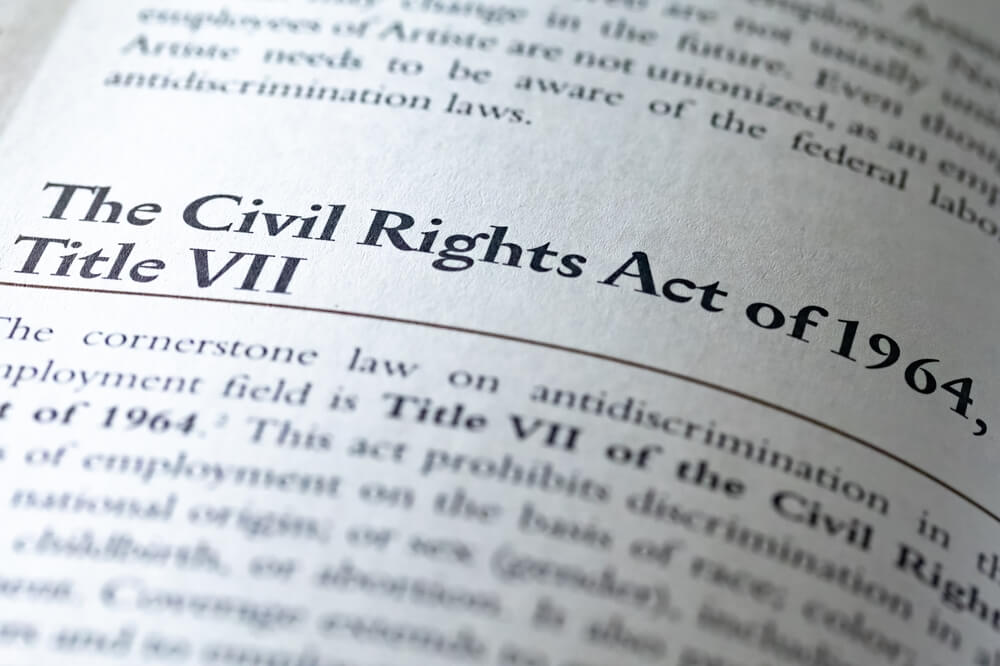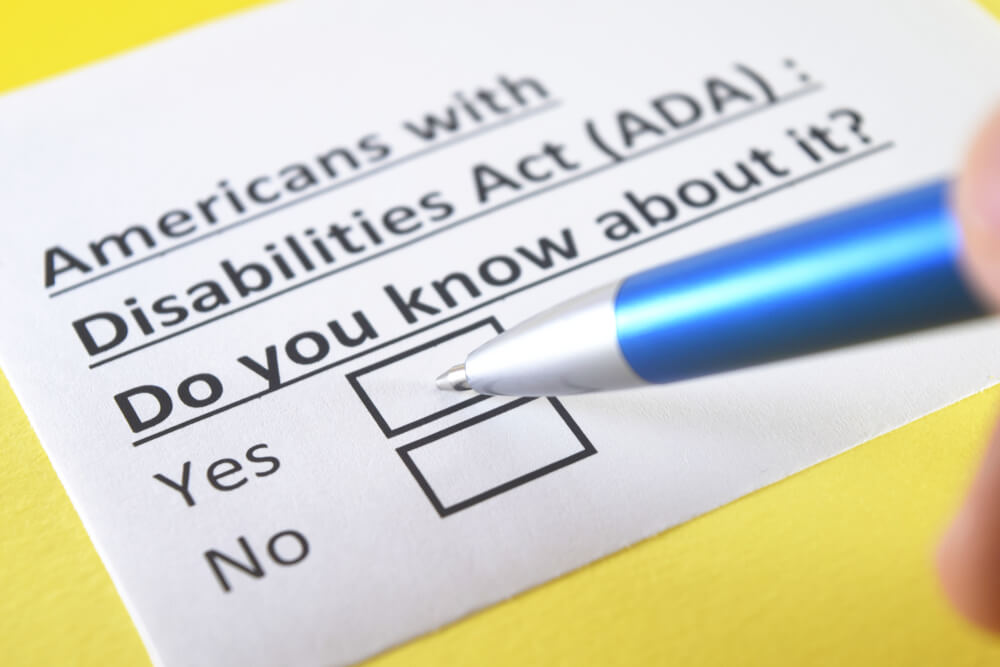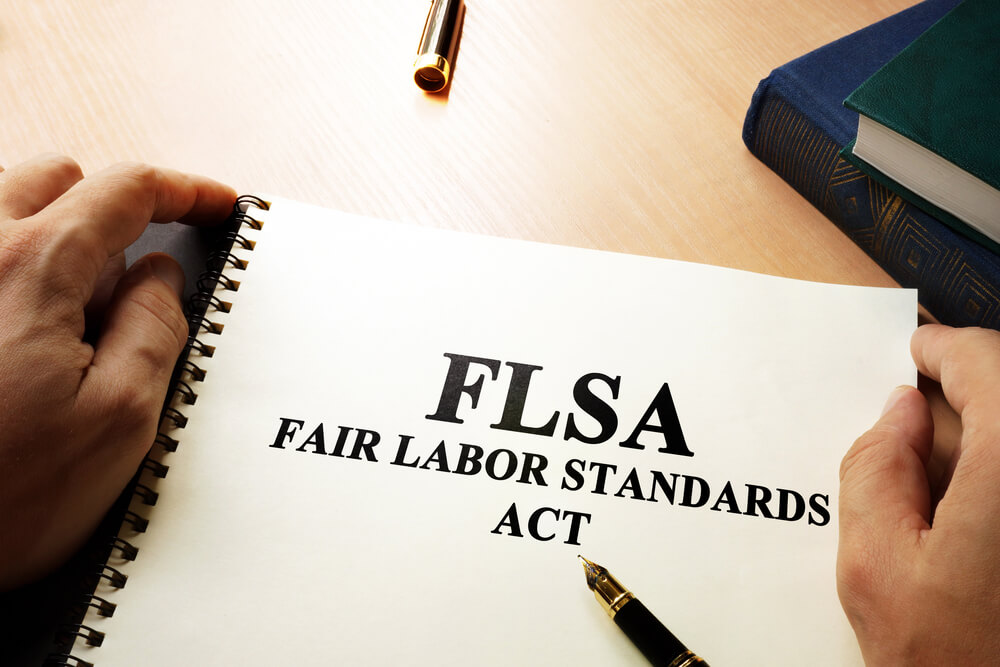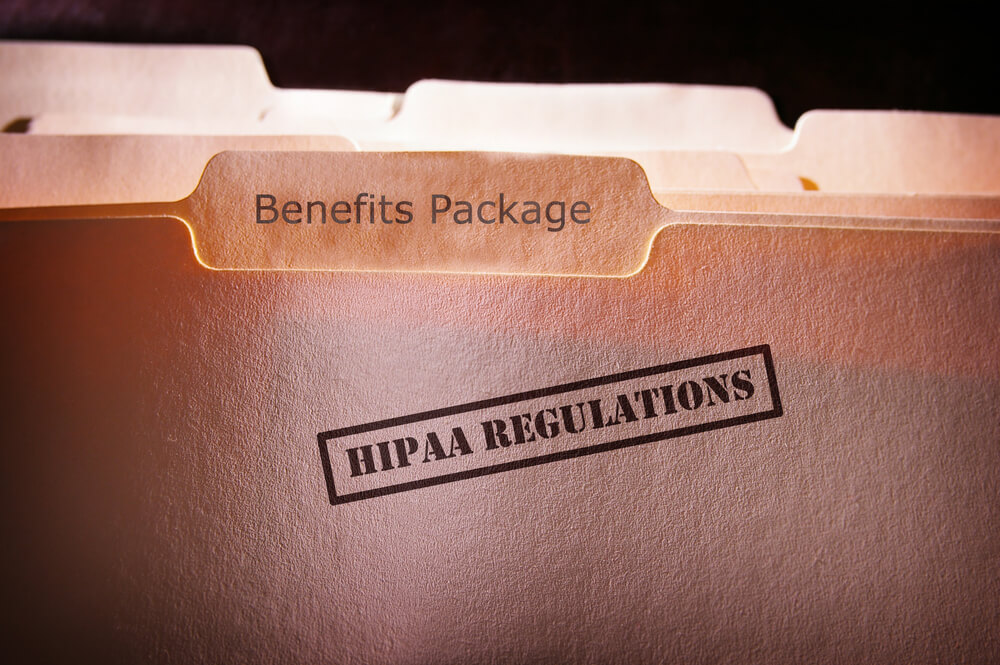In today’s dynamic business environment, Human Resources (HR) compliance plays a critical role in the success of an organization. Compliance with various federal, state, and local laws and regulations protects organizations from legal repercussions and fosters a positive work culture and environment. In this blog post, we will briefly overview key HR-related laws and discuss the importance of following HR compliance best practices in the workplace.
Importance of HR Compliance in the Workplace
HR compliance is essential for any organization, regardless of size or industry. It helps maintain a healthy and productive work atmosphere, boosting employee satisfaction and retention. Complying with HR-related laws and regulations also helps businesses avoid costly fines, lawsuits, and damage to their reputation. Overall, compliance is a cornerstone of an organization’s success, ensuring that employers’ and employees’ rights and interests are respected.
Overview of Key HR-Related Laws
Federal, state, and local laws govern the workplace to ensure employee rights, fair treatment, and equal opportunity. Here are some critical HR-related laws that every organization must be aware of:
- The Fair Labor Standards Act (FLSA) establishes minimum wage, overtime pay, and child labor standards affecting full-time and part-time employees in the private sector and government organizations.
- The Family and Medical Leave Act (FMLA) requires eligible employers to provide unpaid, job-protected leave for qualifying medical and family reasons, including the birth of a child, adoption, or care for a spouse or parent with a serious health condition.
- The Americans with Disabilities Act (ADA) prohibits discrimination against individuals with disabilities in all areas of public life, including the workplace. Employers must provide reasonable accommodations to qualified employees with disabilities unless doing so would cause undue hardship.
- The Genetic Information Non-Discrimination Act (GINA) prohibits employers from using genetic information to make employment decisions, such as hiring, firing, or promoting employees.
Understanding these and other relevant laws and regulations is crucial promote a fair, inclusive, and safe work environment. Below, we will delve deeper into each topic, starting with anti-discrimination and equal employment opportunity regulations.
Anti-Discrimination and Equal Employment Opportunity
Some of your business's most severe reputational hits can come from violating anti-discrimination laws. HR must understand the laws behind discrimination claims, or you risk being perceived as a hostile employer.

Title VII of the Civil Rights Act
Title VII of the Civil Rights Act of 1964 is a landmark legislation prohibiting employment discrimination based on race, color, religion, sex, and national origin. This federal law applies to employers with 15 or more employees and ensures that workers are treated fairly and equitably in all aspects of employment, including hiring, promotion, termination, and compensation. Organizations can benefit from various perspectives and experiences by fostering an inclusive and diverse workforce. This focus on diversity sets the stage for understanding other anti-discrimination laws, such as the Americans with Disabilities Act.
The Americans with Disabilities Act (ADA)
The Americans with Disabilities Act (ADA) is another essential piece of legislation that protects individuals with disabilities from discrimination in the workplace. Employers with 15 or more employees are required to provide reasonable accommodations to qualified employees with disabilities unless doing so would cause undue hardship. These accommodations may include modifications to the work environment, adjustments in work schedules, or assistive technology. Ensuring equal opportunity for individuals with disabilities is just one aspect of promoting a fair and inclusive workplace, and the Age Discrimination in Employment Act (ADEA) addresses another critical element.
The Age Discrimination in Employment Act (ADEA)
The Age Discrimination in Employment Act (ADEA) safeguards employees and job applicants aged 40 and older from discrimination based on age. This law applies to employers with 20 or more employees and covers all aspects of employment, including hiring, promotions, training, compensation, and termination. By promoting age diversity, employers can benefit from the knowledge and experience of older workers, who are invaluable resources in any organization. In addition to protecting employees from age discrimination, it’s essential to consider protections against genetic discrimination through the Genetic Information Non-Discrimination Act of 2008 (GINA).
The Genetic Information Non-Discrimination Act of 2008 (GINA)
GINA prohibits employers from using genetic information in employment decisions, such as hiring, firing, or promoting employees. Genetic information includes an individual’s genetic tests, family medical history, or participation in genetic research. Employers with 15 or more employees must adhere to GINA, ensuring that genetic information does not affect workplace decision-making.
Organizations can further foster a diverse and inclusive work environment by respecting employees' privacy and avoiding genetic discrimination. Having reviewed these key anti-discrimination laws, we can now discuss best practices for promoting diversity and preventing discrimination in the workplace.
Best Practices for Promoting Diversity and Preventing Discrimination
Promoting diversity and preventing discrimination is vital for creating a positive work environment and maintaining HR compliance. Employers should develop and implement comprehensive anti-discrimination policies that communicate expectations, procedures, and consequences.
Regular training programs can help educate employees and managers about these policies and the importance of fostering an inclusive workplace culture. In addition, employers should monitor their practices to ensure ongoing compliance and address any issues promptly. With a solid commitment to diversity and inclusion, organizations can benefit from all employees' unique perspectives and talents while also complying with essential anti-discrimination laws.

Employee Classification and Wage Regulations
When it comes to IRS penalties and employee lawsuits, wage and hour regulations are usually the culprits. The Fair Labor Standards Act (FLSA) specifies the relevant laws.
The Fair Labor Standards Act (FLSA)
The FLSA is a federal law that establishes minimum wage, overtime pay, recordkeeping, and child labor standards for full-time and part-time employees in the private sector and government organizations. Ensuring compliance with the FLSA helps promote fair pay and working conditions for all employees. Understanding the FLSA’s provisions is crucial for proper employee classification, which includes distinguishing between exempt and non-exempt employees.
Exempt vs. Non-Exempt Employees
Under the FLSA, employees are classified as either exempt or non-exempt. Exempt employees are not entitled to overtime pay, while non-exempt employees must receive overtime pay for hours worked over 40 in a workweek. Generally, exempt employees are those in executive, administrative, professional, or outside sales positions who meet certain salary and job duty criteria. Employers must classify employees correctly to avoid potential violations and penalties related to overtime pay. Accurate classification also extends to understanding the distinction between independent contractors and employees.
Independent Contractors vs. Employees
Independent contractors and employees have different legal rights and obligations. Independent contractors are self-employed individuals who provide client services under a contract or agreement. They are not entitled to health insurance, retirement plans, or overtime pay.
On the other hand, employees are entitled to various benefits and protections under employment laws. Misclassifying employees as independent contractors can result in significant penalties and back pay.
Best Practices for Proper Employee Classification
Employers should review job descriptions and duties regularly to ensure they align with FLSA guidelines and other applicable laws. When engaging independent contractors, clear contracts outlining the terms of the relationship can help avoid misclassification. Employers should also maintain accurate records of hours worked, wages paid, and employee classifications to demonstrate compliance with wage and hour laws. By following these practices, organizations can ensure they comply with employee classification regulations and maintain a fair and equitable work environment.

Family and Medical Leave (FMLA)
The Family and Medical Leave Act (FMLA) is a federal law that provides eligible employees with unpaid, job-protected leave for certain family and medical reasons. FMLA applies to employers with 50 or more employees and aims to strike a balance between the demands of the workplace and the needs of employees to attend to their own health or that of their family members. Understanding the eligibility criteria and leave duration under FMLA is crucial for employers to stay compliant and support their employees during challenging times.
Eligibility and Leave Duration
To be eligible for FMLA leave, employees must have worked for their employer for at least 12 months and have completed at least 1,250 hours of service during the 12 months immediately preceding the start of the leave. Eligible employees may take up to 12 workweeks of unpaid leave in 12 months for reasons such as the birth or adoption of a child, the care of a spouse, child, or parent with a severe health condition, or the employee’s serious health condition. Employers must be aware of these requirements and have systems to track and manage FMLA leave requests.
Best Practices for Administering Family and Medical Leave
Employers can comply with FMLA regulations by adopting best practices for administering family and medical leave. Clear policies and procedures should be in place to guide employees and managers through the FMLA process. These policies should be communicated to employees through employee handbooks, training, and other resources.
Employers should also designate a knowledgeable HR professional to handle FMLA requests and answer employee questions. Proper recordkeeping is essential, including tracking leave usage, maintaining documentation, and monitoring the 12-month period for each employee.

Workplace Safety and Health
The Occupational Safety and Health Act (Osh Act of 1970) is commonly confused with the Occupational Safety and Health Administration (OSHA). That makes it all the more important to know what the Osh Act requires and how OSHA enforces it.
The Occupational Safety and Health Act (OSH Act)
The Osh Act aims to ensure safe and healthy working conditions for employees by enforcing standards and regulations for workplace safety. The Occupational Safety and Health Administration (OSHA) covers most private sector employers and their workers, as well as some public sector employers and workers. It is vital for employers to adhere to OSHA’s regulations to protect employees from potential hazards and create a safe work environment. In addition to complying with Osh Act requirements, employers should also implement best practices for maintaining a safe and healthy work environment.
Best Practices for Maintaining a Safe and Healthy Work Environment
Creating and maintaining a safe and healthy work environment involves a proactive approach from employers. Some best practices include conducting regular workplace safety assessments to identify potential hazards and implementing measures to mitigate risks. Employers should also establish clear safety policies and procedures communicated to employees through training programs and written materials. Encouraging open communication channels for employees to report safety concerns without fear of retaliation can lead to timely identification and resolution of potential issues. Additionally, providing employees with proper protective equipment and ensuring regular equipment maintenance are crucial components of workplace safety. By implementing these best practices, employers can foster a safe work environment that protects employees and supports overall business success.
Employee Benefits Compliance
While many small- and medium-sized businesses aren’t required to provide benefits, certain federal laws will apply the moment you do offer employee benefits.
The Employee Retirement Income Security Act (ERISA)
The Employee Retirement Income Security Act (ERISA) sets minimum standards for pension and health benefit plans offered by private-sector employers. ERISA aims to protect employees’ rights to their benefits and ensure that plan funds are managed responsibly. Compliance with ERISA is essential for employers offering their employees benefit plans. In addition to ERISA, other laws, such as the Health Insurance Portability and Accountability Act (HIPAA), regulate employee benefits.
Health Insurance Portability and Accountability Act (HIPAA)
HIPAA is a federal law that governs the privacy and security of individuals’ protected health information (PHI). Employers who offer group health plans must comply with HIPAA’s privacy and security rules to safeguard employees’ PHI from unauthorized access, use, and disclosure. Compliance with HIPAA is vital for employers to maintain employees’ trust and avoid potential penalties. Another law related to employee benefits is the Affordable Care Act (ACA).
The Affordable Care Act (ACA)
The Affordable Care Act (ACA) is a comprehensive healthcare reform law that aims to expand health insurance coverage, control healthcare costs, and improve healthcare quality. Employers with 50 or more full-time equivalent employees must comply with the ACA’s employer-shared responsibility provisions, which require them to offer affordable, minimum-value health insurance coverage to their full-time employees and their dependents. Ensuring compliance with the ACA helps employers avoid potential penalties and contributes to a healthier workforce. In addition to the ACA, employers should also be aware of the Consolidated Omnibus Budget Reconciliation Act (COBRA).
The Consolidated Omnibus Budget Reconciliation Act (COBRA)
COBRA allows eligible employees and their dependents to continue their group health coverage temporarily, usually for up to 18 months, in certain circumstances where coverage would otherwise end, such as job loss or reduced work hours. Employers with 20 or more employees who offer group health plans must comply with COBRA requirements and allow eligible individuals to continue their coverage.
Complying with COBRA ensures that employees can access health coverage during transitional periods.
Best Practices for Administering Employee Benefits
Effective employee benefits administration involves developing and implementing clear policies, procedures, and communication strategies. Employers should maintain accurate and up-to-date records of all benefit plan documents, notices, and disclosures. Regular training for HR professionals and managers can help ensure they know the latest compliance requirements and can answer employee questions.
Employers should also conduct periodic audits of their benefits administration processes to identify and address potential compliance issues.

Immigration and Work Authorization
Immigration-related legislation isn’t just for companies that hire immigrants. No matter who you hire, you must be ready for Form I-9 audits.
Form I-9 and E-Verify
Form I-9 is a mandatory document that employers must complete and retain for each employee to demonstrate their identity and authorization to work in the United States. E-Verify is an optional online system that electronically verifies an employee’s work authorization based on the information provided in Form I-9. Although E-Verify is not mandatory for most employers, it can provide additional assurance of an employee’s work eligibility and help employers maintain compliance with IRCA.
The Immigration Reform and Control Act (IRCA)
The Immigration Reform and Control Act (IRCA) is a federal law that aims to prevent unauthorized employment in the United States. IRCA requires employers to verify the identity and employment eligibility of all employees hired after November 6, 1986. This is achieved through the completion of Form I-9, which employers must retain for a specified period. Ensuring compliance with IRCA is critical for employers to avoid potential fines and penalties related to hiring unauthorized workers. One tool that can help employers with compliance is E-Verify.
To further ensure compliance, employers should implement best practices for verifying employment eligibility.
Best Practices for Ensuring Employment Eligibility
Employers should establish clear policies and procedures for completing and retaining Form I-9 and, if applicable, using E-Verify. Regular training for HR professionals and managers on I-9 and E-Verify requirements can help minimize errors and maintain consistency in the verification process. Employers should also conduct periodic audits of their I-9 forms to identify and address potential compliance issues.
Labor Relations
Whether or not you have to deal with a union, your HR managers need to understand how the National Labor Relations Act impacts your workforce.
The National Labor Relations Act (NLRA)
The National Labor Relations Act (NLRA) governs the relationship between employers, employees, and labor unions in the private sector. The NLRA protects employees’ rights to join, form, or assist labor organizations, bargain collectively, and engage in concerted activities for their mutual aid and protection. It also establishes the National Labor Relations Board (NLRB), which enforces the NLRA and resolves labor disputes. Employers must comply with the NLRA to maintain positive labor relations and avoid potential penalties. One essential aspect of compliance involves understanding the role of unionized employees and collective bargaining agreements.
Unionized Employees and Collective Bargaining Agreements
Unionized employees are represented by labor unions, which negotiate collective bargaining agreements (CBAs) with employers on behalf of their members. CBAs typically cover topics such as wages, hours, working conditions, and grievance procedures. Employers must adhere to the terms of these agreements to maintain positive labor relations and ensure compliance with the NLRA. To effectively manage the relationship with unionized employees, employers should adopt best practices for labor relations.
Best Practices for Managing Labor Relations
Effective labor relations management involves open communication, collaboration, and mutual respect between employers, employees, and labor unions. Employers should establish clear policies and procedures for interacting with union representatives and addressing grievances. Regular training for managers and supervisors on labor relations and the NLRA can help prevent violations and foster a positive work environment. Additionally, employers should involve legal counsel when negotiating and interpreting CBAs to ensure compliance with applicable laws and regulations. This way, employers can maintain positive labor relations, minimize disputes, and support a harmonious workplace.
Recordkeeping and Reporting
Importance of Accurate Recordkeeping and Reporting
Accurate and timely recordkeeping and reporting are essential components of HR compliance. Employers are required to maintain detailed records of employee information and comply with various reporting requirements imposed by federal, state, and local laws. In addition to federal requirements, employers must also comply with state and local regulations.
Some states have laws requiring employers to maintain records beyond those required by federal law. Failure to comply with recordkeeping and reporting requirements can result in significant penalties and legal liability. To ensure compliance with recordkeeping and reporting requirements, it is important to establish and maintain effective recordkeeping systems.
Best Practices for Compliance with Reporting Requirements
Employers should establish clear procedures for reporting required information to government agencies. This may include filing tax returns, submitting reports to the Department of Labor, or providing information to state agencies. Failure to report required information can result in fines and legal penalties.
To ensure compliance with reporting requirements, employers should establish a system for tracking and monitoring deadlines for reporting. Employers should also maintain copies of all reports and filings, as well as any supporting documentation, for a specified period of time.
Regular audits of recordkeeping and reporting systems can help identify areas of noncompliance and provide an opportunity to correct any deficiencies. Employers should also ensure that employees responsible for recordkeeping and reporting receive adequate training and know their responsibilities.
By establishing and maintaining effective recordkeeping and reporting systems, employers can ensure compliance with legal requirements, protect themselves from liability, and improve overall HR management. Accurate recordkeeping and reporting also helps employers make informed decisions about their workforce and provides valuable information for workforce planning and management.
.jpg?width=1000&height=750&name=shutterstock_1814422682%20(1).jpg)
Privacy, Harassment, and Workplace Violence Prevention
Protecting employee privacy and preventing harassment and workplace violence are critical components of HR compliance. Employers must comply with federal, state, and local laws and regulations addressing these issues, such as the Fair Credit Reporting Act (FCRA).
The FCRA regulates collecting and using consumer credit information for employment purposes. Employers must comply with strict requirements for obtaining and using credit reports and other background information.
Best Practices for Prevention
Employers should proactively approach privacy, harassment, and workplace violence prevention by establishing and maintaining effective policies and procedures. This includes developing clear policies and procedures for investigating and addressing incidents of harassment or workplace violence.
Employers should also establish a reporting system for employees to report incidents of harassment or workplace violence and ensure that all reports are taken seriously and investigated promptly. It is essential to protect the confidentiality of employees who report incidents and to take appropriate action to address the situation.
Regular training on appropriate workplace behavior and recognizing and preventing harassment and workplace violence is essential. Employers should also conduct regular audits to identify areas of concern and make necessary adjustments to policies and procedures.
By establishing and maintaining privacy, harassment, and workplace violence prevention policies and procedures, employers can create a safe and respectful workplace culture. This can help attract and retain top talent, improve employee morale and productivity, and reduce the risk of legal liability.
Staying Up-to-Date with Changing Laws and Regulations
Regular audits and updates are essential for employers to ensure continued compliance with ever-changing HR laws and regulations. Conducting periodic audits helps employers identify potential compliance issues, risks, and areas for improvement. Updating policies, procedures, and training materials in response to changes in laws and regulations ensures that employers stay compliant and maintain a legally sound work environment. One effective method for staying up-to-date with changing laws and regulations is adopting best practices for monitoring and implementing new requirements.
Best Practices for Monitoring and Implementing New Laws and Regulations
To stay current with changing laws and regulations, employers should develop a proactive approach that includes monitoring relevant legislative and regulatory developments, assessing their potential impact on the organization, and implementing necessary changes. Employers can leverage resources such as government websites, industry newsletters, and legal counsel to stay informed about changes in HR laws and regulations. Regular training sessions and updates to internal policies and procedures can help ensure that employees and managers are aware of and comply with the latest requirements. For organizations seeking a more comprehensive solution, partnering with a Professional Employer Organization (PEO) can simplify the compliance process.
PEOs are third-party organizations that provide comprehensive HR services, including compliance support, to small and medium-sized businesses. By partnering with a PEO, employers can gain access to dedicated HR professionals who track legislation and regulations, ensuring that the organization stays up-to-date with the latest compliance requirements. This partnership allows employers to focus on their core business operations while the PEO handles HR compliance matters, ultimately simplifying the compliance process and reducing the risk of penalties or legal issues.
PEOs Keep You Compliant with HR Best Practices
HR compliance is an ongoing responsibility for employers, and its importance cannot be overstated. Maintaining compliance with the various laws and regulations governing the workplace not only helps employers avoid fines, penalties, and legal issues but also fosters a positive work environment that supports employee satisfaction, retention, and productivity. By implementing the best practices discussed in this blog, employers can effectively manage their HR compliance responsibilities and focus on growing and sustaining a successful organization.
PEOs track legislation and regulations for you, simplifying the compliance process. For organizations seeking a more comprehensive solution to HR compliance management, partnering with a PEO can be an effective option.
PEOs provide dedicated HR professionals who track legislation and regulations, ensuring that your organization stays up-to-date with the latest compliance requirements.
By outsourcing HR compliance tasks to a PEO, employers can focus on their core business operations while enjoying the peace of mind that comes from knowing their HR compliance needs are in good hands.



